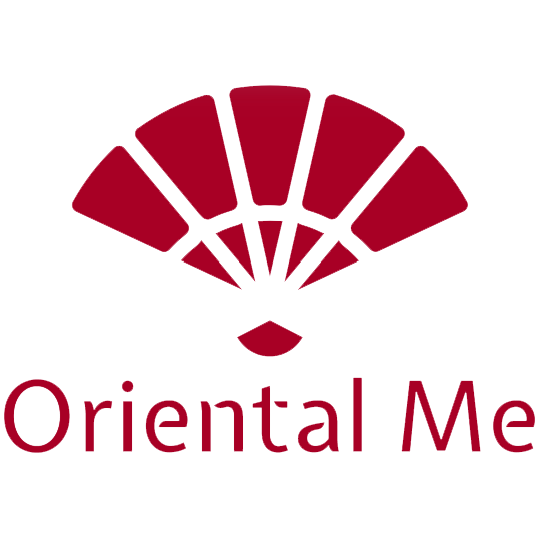- Was ist Qun Kwa?
- Arten von Qun Kwa
- Was trägt man unter Qun Kwa?
- Symbolik der Muster auf dem Drachen und Phönix Qun Kwa
Was ist Qun Kwa?
Das Qun Kwa (裙褂), auch bekannt als Qun Gua oder Qun Kua, ist ein traditionelles chinesisches Hochzeitskleid, das tief in der chinesischen Kultur, insbesondere in den kantonesischen Gemeinden, verwurzelt ist. Dieses Kleidungsstück ist reich an Symbolik und zeichnet sich durch aufwendige Stickereien aus Gold- und Silberfäden aus. Bekannte Motive wie Drachen, Phönixe und Pfingstrosen symbolisieren Glück. Der Begriff „Qun“ (裙) bezeichnet den Rock, während „Kwa“ (褂) Jacke bedeutet und den zweiteiligen Schnitt des Outfits unterstreicht. Traditionell wird das Qun Kwa von der Braut während der Teezeremonie und anderer Hochzeitsrituale getragen und manchmal auch beim Hochzeitsbankett präsentiert, um ihr kulturelles Erbe zu würdigen.
Arten von Qun Kwa: Dragon Phoenix Kwa vs. XiuHeFu
1. Traditioneller Drache Phoenix Kwa
- Geschichte: Die Drachen-Phönix-Kwa-Tradition begann, als ein Kaiser der Tochter des Premierministers der Qing-Dynastie, Liang Chu, zur Hochzeit einen Drachen- und Phönix-Kwa schenkte, der kunstvoll mit Seide bestickt war. Dieser kaiserliche Segen brachte Ehre und legte den Trend fest, Kwa bei Hochzeiten zu tragen.
- Muster: Die Kwa muss sowohl Drachen- als auch Phönixmotive enthalten, wobei das Farbschema auf rotem Stoff und Gold- oder Silberstickereien festgelegt ist. Das Design betont die Bedeutung des Drachen, wobei der Phönix so positioniert ist, dass er zu ihm führt.
- Stickerei: Unter Verwendung der Bok-Sam-Technik aus der kantonesischen Stickerei, die einen 3D-Effekt erzeugt, werden diese Kwa nach Stickdichte kategorisiert:

- King Kwa (褂皇): 98–100 % mit Stickereien bedeckt. Fast völlig ohne Rot.
- Queen Kwa (褂后): 90 % mit Stickerei bedeckt
- Große fünf Segnungen (Da Wu Fu大五福): 80 % mit Stickerei bedeckt
- Mittlere Fünf Segnungen (Zhong Wu Fu中五福): 70 % mit Stickerei bedeckt
- Kleine Fünf Segnungen (Xiao Wu Fu小五福): Weniger als 50 % mit Stickereien bedeckt
- Form
- Die Oberjacke: typischerweise in gerader Röhrenform. Mit der Entwicklung der zeitgenössischen Ästhetik wird die Oberjacke jedoch oft tailliert geschnitten, um die Schönheit der weiblichen Figur zu betonen.
- Der Unterrock: hat traditionell eine gerade Form, während neue Designs moderne Anpassungen mit einem ausgestellten Stil beinhalten.
2. XiuHeFu
- Geschichte: Das Xiuhefu ist eine moderne Adaption der Aoqun-Hochzeitskleidung der Qing-Dynastie und folgt dem traditionellen chinesischen Yingyang- Kleidungssystem
- Muster: Xiuhe-Kleider zeigen neben Drachen und Phönixen auch verschiedene Muster, darunter Blumen und Tiere mit glückverheißender Bedeutung. Pfingstrosen stehen beispielsweise für Wohlstand, Vögel (z. B. Pfauen) symbolisieren Liebe für mehrere Jahreszeiten, Fledermäuse symbolisieren Glück und Lilien symbolisieren Harmonie für das Paar.
- Form: Xiuhefu ist ebenfalls ein Zweiteiler. Diese Kleider verbinden traditionelle Kwa-Elemente mit modernen A-Linien-Rockdesigns. Der Rock hat einen lockereren Schnitt, allgemein bekannt als Mamianqun , und kann entweder als A-Linie, Faltenrock oder Tellerrock ausgeführt sein.
Was trägt man unter Qun Kwa?

Nach traditionellem Brauch tragen Bräute unter dem Kleid üblicherweise ein rotes Unterkleid. Dieses dient zwei Zwecken: Erstens soll es die Haut vor Reizungen durch den groben Stoff des Qun Kwa schützen und zweitens soll es Festlichkeit und Glück symbolisieren.
Symbolik der Muster auf dem Drachen und Phönix Qun Kwa
- Drache: Symbolisiert glückverheißende Segnungen im ganzen Land; zusammen mit dem Phönix steht er für Harmonie und Wohlstand.
- Phönix: In Verbindung mit dem Drachen symbolisiert er eine freudige Verbindung und verkörpert alles Glück und alle Freude.
- Goldfisch: Symbolisiert Jahr für Jahr Überfluss mit dauerhaften Segnungen.
- Mandarinenten: Stehen für Liebe und Harmonie zwischen Mann und Frau und wünschen sich eine glückliche, lebenslange Ehe.
- Fünf Fledermäuse: Ein Homophon für „fünf Segnungen“, das die Ankunft von fünf Segnungen symbolisiert (Langlebigkeit, Reichtum, Gesundheit, Tugend und friedlicher Tod).
- Glückverheißende Wolken : Stehen für Reichtum, Segen und einen reibungslosen Fortschritt im Leben.
- Pfingstrosenblüte : Symbolisiert Anmut, Luxus und Schönheit und ist ein nationales Kulturgut.
- Granatapfelblüte : Mit ihren zahlreichen Samen symbolisiert sie Fruchtbarkeit und den Wunsch nach vielen Nachkommen.
Bedeutung des Qun Kwa
- Einheit und Harmonie: Die Verbindung von Drache und Phönix symbolisiert eine harmonische Ehe, die die Stärken und Tugenden beider Partner vereint.
- Wohlstand und Glück: Diese Symbole sollen dem Brautpaar Glück, Wohlstand und Freude bringen.
- Kulturelles Erbe: Das Tragen eines Qun Kwa ehrt das chinesische Erbe und respektiert über Generationen weitergegebene Bräuche
Moderne Adaptionen
Während manche Bräute sich für das traditionelle Qun Kwa entscheiden, können moderne Hochzeiten Variationen beinhalten, die zeitgenössische Mode mit traditionellen Elementen verbinden. Designer experimentieren möglicherweise mit Farben, Stilen und Stoffen, behalten aber die symbolische Drachen- und Phönix-Stickerei bei.
Zusammenfassend ist das Qun Kwa mehr als nur ein Hochzeitskleid; es ist ein kulturelles Artefakt, das die Hoffnungen, Traditionen und Werte chinesischer Hochzeiten verkörpert. Drachen und Phönixe dienen als kraftvolle Symbole und stehen für Wohlstand, Harmonie und ewige Liebe für die gemeinsame Zukunft des Paares.





